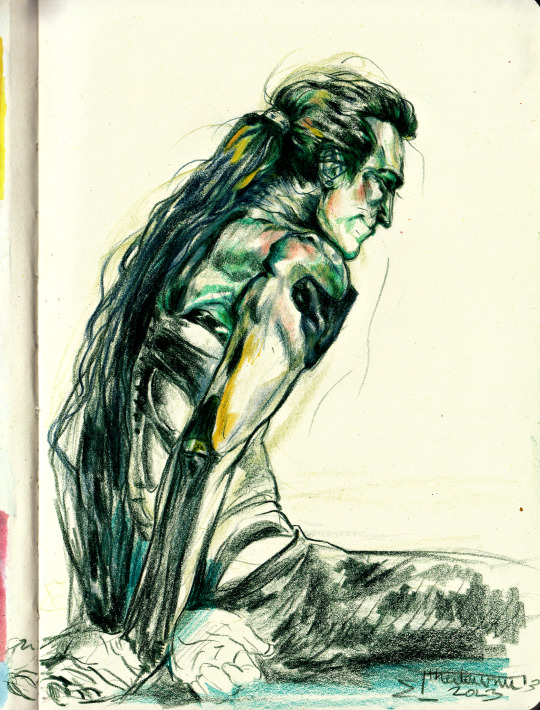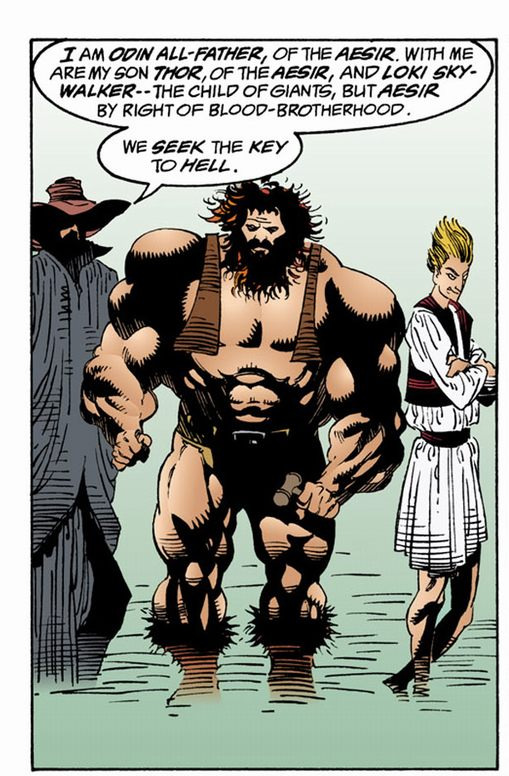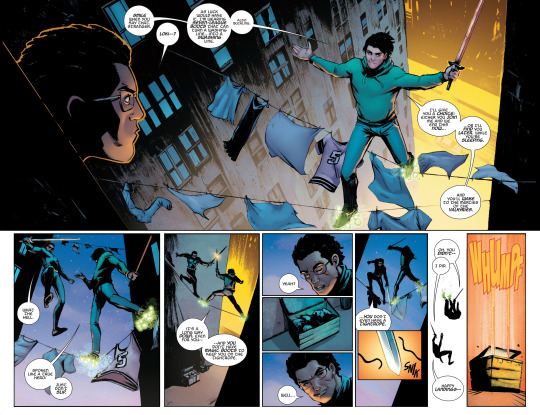#Norse myths
Explore tagged Tumblr posts
Text

one day I’ll catch up
terfs fuck off
made in 2023
#wolf art#wolves#animal art#snake art#norse mythology#norse myths#sun art#moon art#nature art#artists on tumblr#block print#block printing#linoprint#printmaker#linocarving#linocut print#linocut#linogravure#printmaking#small artist#traditional art#traditional printing#traditional printmaking#original art#lesbian artist#butch artist#trans artist#disabled artist#art#typography
1K notes
·
View notes
Text

Olaf Willums (1886-1967), 'Illustration to Old Norse Ballad', ''The New Woodcut'', 1930 Source
#Olaf Willums#norwegian artists#Norwegian ballads#norse myths#woodcuts#vintage illustration#black and white art
181 notes
·
View notes
Text
I cannot recommend Heimskringla.no enough
Every original Norse text is digitalised and uploaded. All translations that are creative commons are there. More modern folktales and oral stores are there. Several research papers, analyses, commentary and opinion pieces have been added. And they offer very cheap physical prints of many things that are out of print.
They now have 7600 texts!
Of course most texts are old Norse, Icelandic, Danish, Norwegian, Swedish and Finn. But you can find English papers and translations too.

If you want to learn one Scandinavian language I recommend Norwegian. Then you can read Danish and understand Swedish.
142 notes
·
View notes
Text

Source: VK.com
Artist: Sjors van Helmond [ArtStation]
Original posted 27th December, 2021
Created by Photoshop
"In this artwork, I wanted to display the mystery and wisdom associated with the All-Father of the Norse gods. The artwork features Odin with all his attributes, his ravens, his wolves, his spear, his drinking horn, his hat and his magic ring. The illustration also features various references to stories related to Odin like the three shields in the bottom. The first shield shows Odin sacrificing his eye to the well of Mimir for wisdom, the second shield depicts Sleipnir Odin's eight legged horse and the third shield shows how Odin and his two brothers carved the first two humans Ask and Embla out of wood."
Re-posted respecting finding the original on ArtStation.
#Odin#odhinn#rune#runes#odin art#rune art#norse gods#norse myths#odinn runes#rune designs#norse god#allfather#grimnir#wotan#woden
144 notes
·
View notes
Text

Inktober day 10: Hel, goddess of death and ruler of Helheim.
#my art#mythology#norse mythology#hel goddess#hel#norse myths#hel Norse myths#hel goddess of the dead#inktober 2024#inktober#inktober day 10
37 notes
·
View notes
Text


Some small, traditional Loki doodles
#finished#doodle#portrait#drawing#traditional#traditional art#traditional drawing#loki#too human#too human game#i forgot his face tat#feck#i'll add it at another point#norse mythology#aesir#norse god#norse gods#norse myths#pencil#marker#too human fanart#fanart
392 notes
·
View notes
Text


The Ramsund carving, believed to have been carved around 1030, was found close to Ramsund, Sweden. It is considered part of the “Sigurd stones”, a group of eight or nine runic inscriptions which can be found in Sweden, with all pertaining to the myth of the hero Sigurðr. The Ramsund stone depicts scenes from the Völsunga Saga, which go as follows:
Sigurðr preparing a fire to roast the dragon Fáfnir’s heart, as instructed by his uncle Regin. Having burnt himself in the process, Sigurðr sticks his finger in his mouth. He is soon to discover that the dragon’s blood which stained his finger gave him the ability to understand the language of birds as they sang.
The birds warn Sigurðr that Regin intends to kill him and take the dragon Fáfnir’s treasure for himself.
This prompts Sigurðr to end the life of his treacherous uncle, whose body now lies next to his smithing tools.
Sigurðr’s horse Grani now carries the dragon’s treasure.
Depiction of Sigurðr killing Fáfnir: having concealed himself in a hole outside the dragon’s lair, he waited for it to crawl outside and towards the river to go and drink so he could stab upwards into the beast’s heart.
Depiction of the three brothers, Regin, Fáfnir (whose greed turned him into a dragon), and Ótr, who appears along with his brethren at the beginning of the saga.
#heathenry#sagas#runestones#norse paganism#spirituality#norse myths#mythology#myths#paganism#polytheism#runes
223 notes
·
View notes
Text
I'm more inclined to believe/prefer the theory of Sigyn being a war related goddess rather than the theory of her being a valkyrie/former valkyrie
It just makes more sense to me, and I feel as if it gives her individualism as possibly a victory and loyalty goddess rather than having her be connected to the valkyries
#norse mythology#sigyn#war goddess#theory#norse myth theory#norse myths#myth!Sigyn#I also don't believe the theory that she was meant to be seen as a gentle goddess either
42 notes
·
View notes
Text
Logynian Flag 🩷🤍💜



Alt name: Sapphuric (Sapphic + Duaric) When one is both wlw and wlm!
Same definition as the Salietian flag! However, logynian also deeply applies to bi sapphics with sapphillean genderfluid partners!
I made this specifically with Loki and Sigyn in mind as their relationship is sapphic and duaric, with Sigyn loving Loki in all forms and Loki being genderfluid and sapphillian. Their relationship is sometimes sapphic and sometimes duaric and Sigyn’s relationship is both wlw and wlm! In Norse mythology, the star is Sigyn’s symbol, and the snake is Loki’s symbol, so I used both in this flag!
Note: Loki is not genderfluid trixic, Loki is sapphillean and inextricably male and female in the mythos. Yes, lesbianism does includes genderfluid folks, but those folks are sapphic leaning, which is not Loki’s case. Loki is a genderfluid god and Sigyn is a flaming bisexual goddess for loving them, and Logyn is the bi4bi sapphic and (simultaneously) duaric couple of all time.
#logynian#bi wlw#bi wlm#salietian#selenic#duaric#bisexual#bi4bi#bisexuality#norse mythology#loki#loki laufeydottir#loki laufeyson#trickster god#sigyn#justice for sigyn#lady sigyn#lady loki#bisexual wlw#bisexual wlm#bi pride#bi positivity#bisexual pride#bisexual positivity#norse myths#bi bi bi#bi#bi flag
31 notes
·
View notes
Text
I wanna have a green thumb so bad. This is what I want my home to look like.
Something that I love to do, especially with flowers is look up their myths and legends from all different places.




#garden#gardening#plants#plantblr#garden aesthetic#flowers#planting#girlblogging#this is what makes us girls#im just a girl#just girly things#this is a girlblog#girl blogger#blogging#girlhood#blog girl#plus size blogger#blog#girlie things#girl things#green thumb#plantcore#earth#girl blog aesthetic#so pretty#flower garden#myths and legends#greek myths#norse myths#mythology and folklore
19 notes
·
View notes
Text
Lazy "Wards"
So today, I was lying in my bed, and I was thinking about how I desperately did not want to refresh my wards. I was feeling tired, burned out, frustrated, and just generally awful. I knew I needed to refresh them, but I also knew that it was going to take so much effort that I didn't have. Thus began the thought:
Is there an easier way to ward my space?
Turns out there is! Now, I know wards are normally random things you put in your room and re-do every once in a while, but ✨️these ones are fun and cool✨️. I compiled a list of the five easy wards I do for when I'm feeling absolutely AWFUL. Here they are!
Morning and Night Playlists
Make two playlists— one that you'll listen to as soon as you wake up, and one that you'll listen to right before you sleep. They don't have to have any specific genre; just do what you feel like you need during those times. Maybe even create a playlist cover photo if you're feeling inspired!
Turn your fan on
I am dead serious with this one, folks. It could technically be considered cleaning, but FUCK IT. Open your window and/or your door and turn on a fan. Let that air flush OUT the energy from inside and pull IN the good shit from outside. I would probably do this like once a week. Have fun with it! Maybe even play those playlists and have a whole dance party!
Stuffed Animal of the Month
That's right. You heard me. Choose a stuffed animal that will protect your space for a month. Next month, choose a different one. Repeat that for, like, forever or whatever. The important thing is that you choose a stuffed animal, you tell them "Hey, I need you to guard my shit," and you give them LOOOOTS of cuddles in return. I love this one a little too much.
Tape a picture of a sigil on your door
This one's for the people who are able to be out as a witch. If you can't do a sigil, even putting a picture of an animal or object is good enough! Just tape it to your door, either facing you or the outside, and let it do its thing.
Incense and screaming
This is more of a cleansing method than a ward. DO IT. Open your window and/or your door again, light that shit up, and scream out all the energy that you've been building up. Tell it to get-the-fuck-out or you'll roundhouse its ass. But also find the good shit and ask it to join you!
I hope yall like this post. I really liked making it!! These methods are probably not all new, and I'm most definitely not the one who invented them, but STILL. I like them and I hope you do too!
#eclectic pagan#hellenic pagan#pagan#pagan witch#gay pagan#pagan blog#pagan community#paganism#deity work#divination#norse deities#greek deities#deity#hellenic deities#deity worship#protection#protection magic#norse mythology#greek mythology#greek myths#norse myths#wards#protection wards#paganlife
58 notes
·
View notes
Text

I want to bring back this post I reblogged years ago because today I remembered it, read it again and the only conclusion my delulu brain came up with was "Finnish people descend from Loki!"
And before I knew it, I made this:

So, yeah...
95 notes
·
View notes
Text
Why is Loki Called Skywalker? Answer: No, it is NOT a Star Wars reference! You have it backward!

Answer for Why is Loki called "Skywalker" in The Sandman: Season of Mists?
I've seen this questioned a lot lately.
"Why is Loki called Skywalker?" "Is it because he's dressed like a cross between Hon Solo and Luke? Lol! Love it!"
Eh... No. (though I admit he does look like that in that artwork, doesn't he?)
Loki actually had the title before Luke. George Lucas was the one making a reference to Loki, not Loki making reference to George Lucas.
Darth Vader was from the Dutch to mean Dark Father. And Anikin meant a type of giant. Get it? Giant Dark Father. Father of Loki... I mean Luke. It was George Lucas who made the reference. Loki had the name first.

It's a bit like when younger people get weirded out to find out "Canon" originally was used to mean "What is considered true within the Catholic religion." The Catholic church used it first before the word Canon was applied to "Is it true within this work of fiction." In fact canonization is the term used to mean officially acknowledging someone is a saint.
Now... To answer the question of why is Loki called Skywalker?
Well, he is the trickster God.
Skywalker (sometimes translated as Sky-treader) means Loki could travel fast and easily between realms. (Yes, without need of the Bifrost.)
One explanation for this power was given later with the concept of the Seven-League Boots.
A popular trope in European folktales are a magical pair of boots known as The Seven-league boots (roughly twenty one miles as a league is three miles). The boots could let you travel twenty one miles with a single step and could allow the wearer to walk on anything including shadows, mist, and moonbeams.
You could pass from one world to another such as the realm of Faerie with a mere thought.
One of my favorite mentions of the Seven-League boots is in Goethe's Faust Part 1.
In Marvel's Loki: Agent of Asgard, Loki has the Seven-league boots and this is cleverly tied to the Faust depiction of them becuase Loki stole them from Mephisto (who is also the demon from Faust, besides being an antagonist in Marvel comics).

Some more contemporary variations of the Loki myths suggest he's always had seven-league boots, which accounted for his unique ability to travel easier than the other Norse Gods.
#Loki#Luke SKywalker#Loki Skywalker#Loki Laufeyson#Norse Mythology#Asatru#Norse Myths#Neil Gaiman#Heathen#Heatenry#George Lucas#Star Wars#The Sandman#Sandman#Marvel#Loki: Agent of Asgard#DC Comics#DC
77 notes
·
View notes
Text
JANAURY DAY 22 - Fenrir AU - @madscientists1mp

January 21st, 2025- fun fact! The orb in the art is not the moon like werewolf lore, if it were in color it would be the sun because that’s what fenrir wolf eats at the end of the world I think. Keep in mind I did no research and went off my decades old Norse mythology hyperfixation
#also my ass is NOT drawing another animal after borzoi doc I’m sorry#itsthemorph#back to the future#morph is a member of the junior coast guard#doc brown#bttf janaury#bttf janaury 2025#fenrir au#norse myths
12 notes
·
View notes
Text

"Wild Hunt"
By Scott Sterling
Ink and coloured pencil on paper, 9"x9"
The Wild Hunt is a ghostly ride through the stormy night skies of winter, said to appear in many regions of Britain and Northern Europe from late autumn to early spring. Its specific lore appears in many guises, varying by locality and culture. In my cover image, the leader of the hunt is Woden (Odin) on his 8-legged horse, accompanied by hounds, gathering up lost souls and ghosts along the way.
Scott Sterling Facebook Profile picture 2025_02_08
#Scott Sterling#Drumspyder#scott sterling drumspyder#Wild Hunt#Odin#odin and the wild hunt#norse gods#norse gods art#norse mythology#odin art#wild hunt art#norse mythology art#norse myths#norse folklore#odhinn#celtic frame art#scott sterling art#norse runes
58 notes
·
View notes